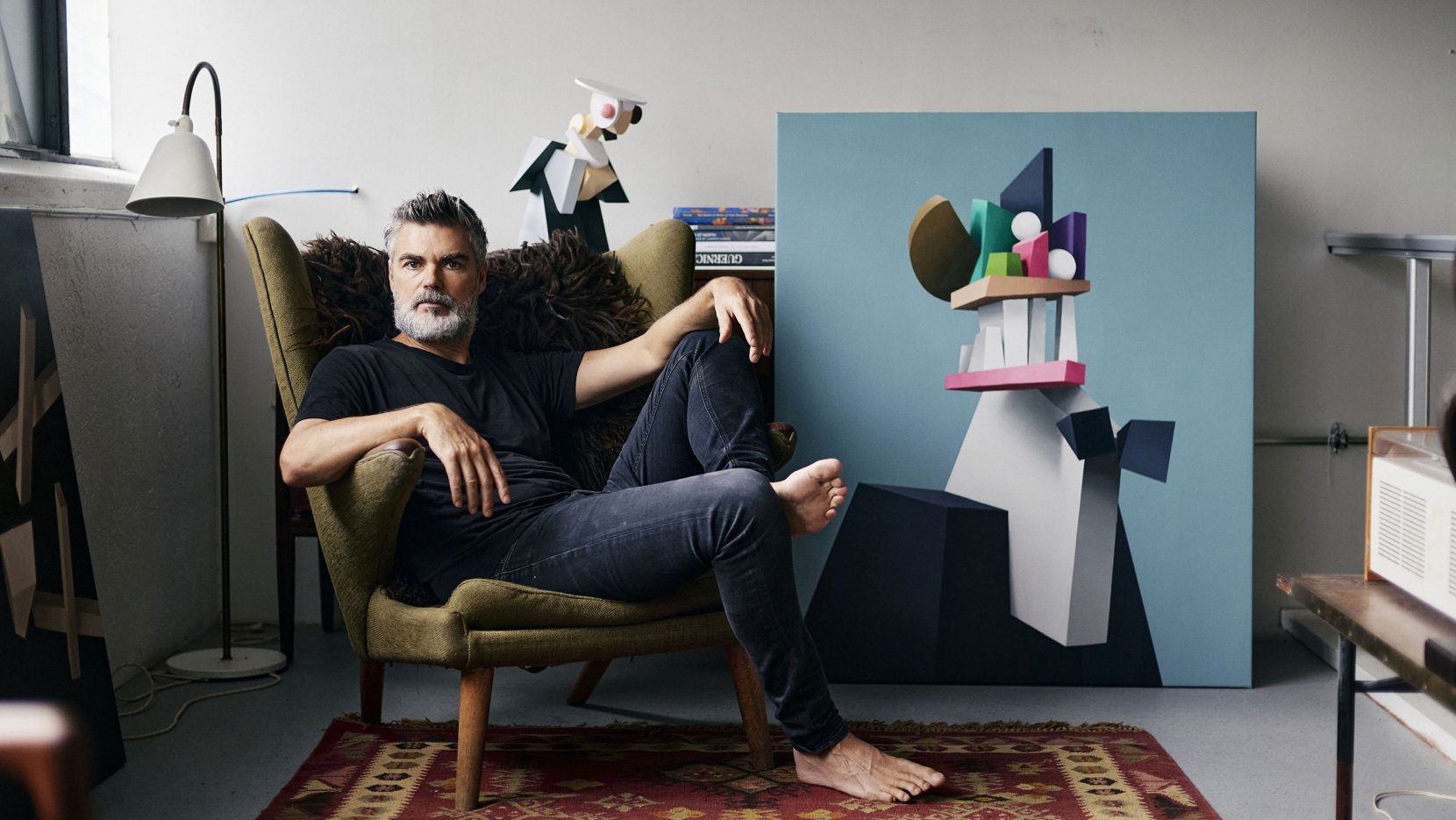The Oxford Dictionary defines a “portrait” as a painting, drawing, photograph, or engraving of a person, especially one depicting only the face or head and shoulders. This definition highlights the traditional artistic representation of individuals, which focuses on their facial features and expressions. However, as Oslo-based artist Jason Boyd Kinsella demonstrates, a good portrait need not necessarily capture physical likeness; in fact, it can even completely ignore it. His series of abstract portraits visualizes a person’s unseen essence through elaborate assemblies of immaculately painted, colourful geometric volumes. Fascinated since his teens with the Myers-Briggs personality indicator, his geometric visual language aims to represent the building blocks of psychological attributes, in other words what his subjects are like rather than what they look like.
Intuitively created, Kinsella’s portraits are both reductive and expository, retaining a sense of humanness despite their abstract form. Spanning painting, sculpture and video, his work, which he terms ‘fleshless portraiture’, uncannily conjures the quirks and idiosyncrasies underpinning the subject’s personality while simultaneously conveying the commonality of humanity. Stylistically, Kinsella’s portraits draw from modern art movements like De Stijl and Cubism, but at the same time, whimsically channel the classicism of the Old Masters by incorporating elements like the 3/4 pose and linear perspective. Their fluid, deconstructed figuration also reflects the concept of the malleable digital self in the age of social media and the metaverse. Yatzer recently caught up with the artist to talk about his artistic practice, his approach to portraiture, and his interest in psychology.
(Answers have been condensed and edited for clarity.)
